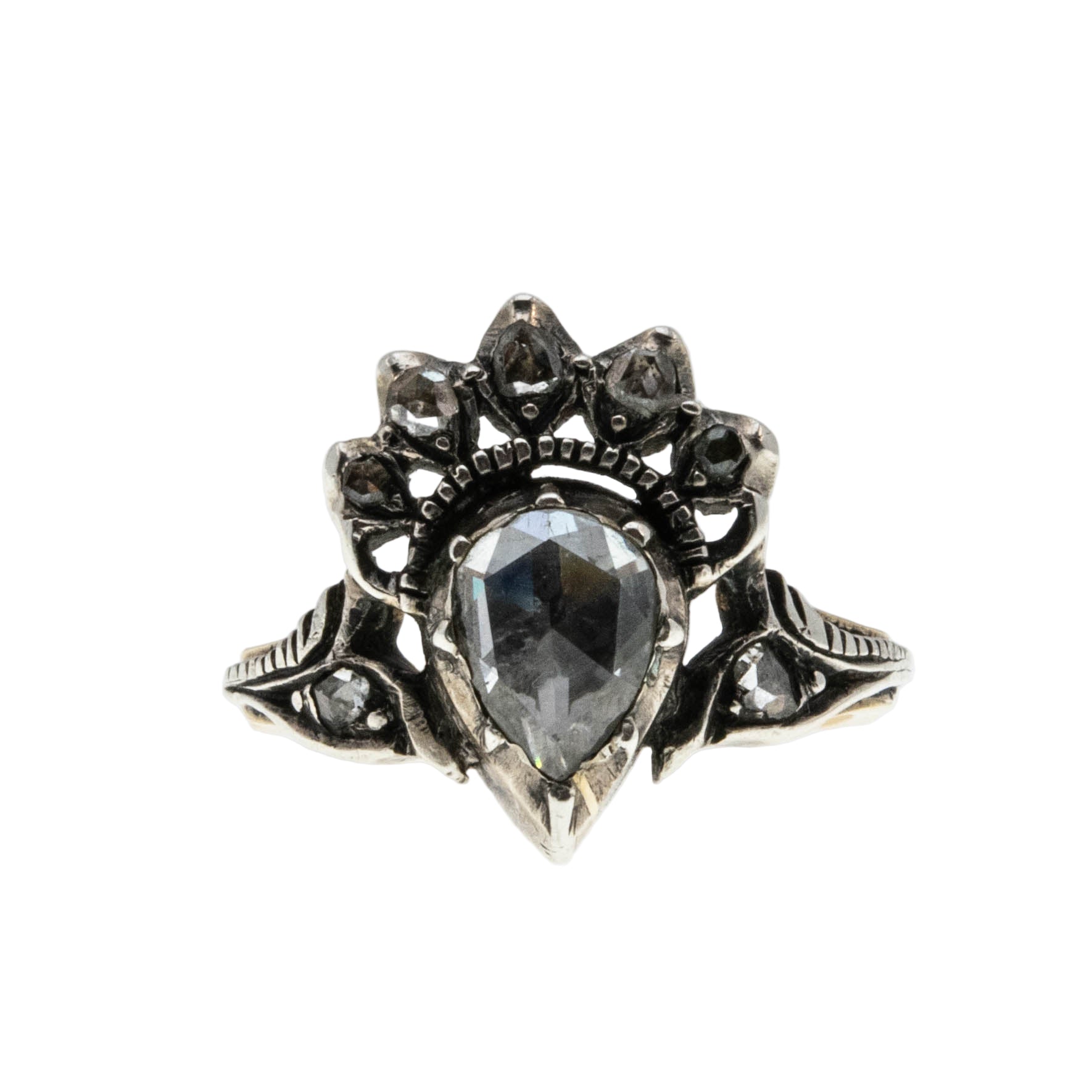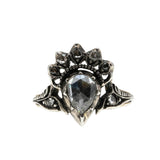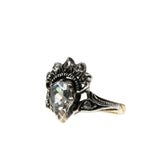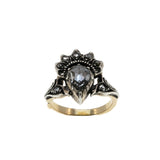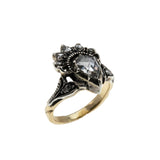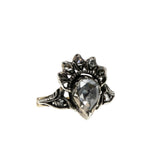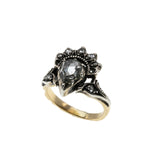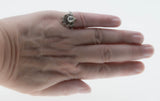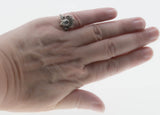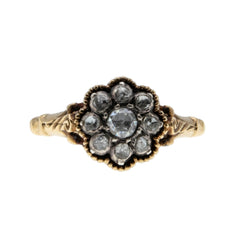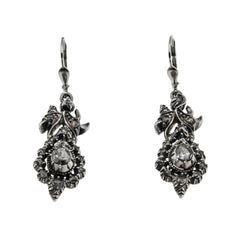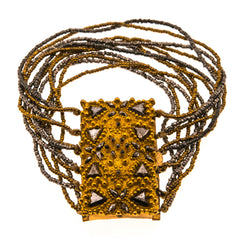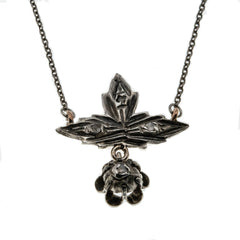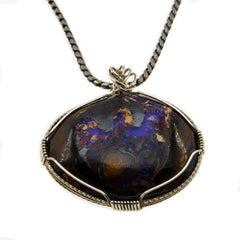Crowned Heart - Georgian 18th/19th Century 14K Gold Silver Natural Rose-Cut Diamond Ring (GR036)
Rarities Antique Jewelry
Crowned Heart - Georgian 18th/19th Century 14K Gold Silver Natural Rose-Cut Diamond Ring. This wonderful ring is crafted from 14K yellow gold, and silver. The ring features one natural rose cut pear shape diamond, 7 natural rose cut diamonds, Georgian era styling, and quality craftsmanship. This antique ring is comprised of a beautiful glowing central diamond (Pear shaped gems were often a symbol of the heart in this time period), which is crowned by wonderful glowing rose-cut diamonds on the top, and the sides of the ring. The gallery is crafted in silver, since white gold had not yet been invented, Whilst the band is crafted in yellow gold, and beautifully sculpted. This Georgian era ring is a rare find, which symbolizes love and loyalty.
Note: Contemporary appraisals do not reflect the value of antique jewelry. It is recommended that this ring be insured for $11,500.00 (Tax Excluded)
History: The earliest diamonds were found in India in 4th century BC, although the youngest of these deposits were formed 900 million years ago. A majority of these early stones were transported along the network of trade routes that connected India and China, commonly known as the Silk Road.
The rose cut originated in the 1500's and was commonly used through the Georgian and Victorian eras. Like other antique diamond cuts, they were cut by hand and meant to dazzle under candlelight. Their large, wide facets performed exquisitely in low light conditions.
The rose cut is considered to be one of the oldest diamond cuts. Rose cut diamonds gathered popularity from their creation in the 1500s right through to the late 19th Century.
Today, they are seeing a renaissance and are highly sought-after.It can be challenging to find a rose cut that you'll love because they are so rare in the market. - Because the rose cut diamond is cut by hand, there will often be tiny imperfections or asymmetries to the facets.
Many are already aware of history behind the 'ring finger,' and with the romanticism of the 'Rose Cut', the cut became a symbol for love as the ring would be “wrapped around the part of the body that connected directly to the heart”
Gold was generally used for a couple thousand years solely to create things such as jewelry and idols for worship. This was until around 1500 BC when the ancient empire of Egypt, which benefited greatly from its gold-bearing region, Nubia, made gold the first official medium of exchange for international trade.
The first evidence of silver mining dates back to 3000 B.C., in Turkey and Greece, according to the RSC. Ancient people even figured out how to refine silver. They heated the silver ore and blew air over it, a process called cupellation.
The sterling alloy originated in continental Europe and was being used for commerce as early as the 12th century in the area that is now northern Germany. A piece of sterling silver dating from Henry II's reign was used as a standard in the Trial of the Pyx until it was deposited at the Royal Mint in 1843.
The crowned heart symbol has been used to express love and fidelity since the 17th century. Its literal meaning can be interpreted to 'let love rule'. With the heart symbolizing love and the crown symbolizing loyalty, these rings were often used as betrothal rings.
Jewelry made before 1850 (The Industrial Revolution) was completely hand-made, using only tools and no machinery. These jewels are a wonderful example of completely hand-made jewelry.
The Georgian era was a period in British history from 1714 to c. 1830–1837, named after the Hanoverian kings George I, George II, George III and George IV. The definition of the Georgian era is also often extended to include the relatively short reign of William IV, which ended with his death in 1837.
Antique jewelry often tells a story-both of the eras in which they are created, and of the lives they have touched. It's this history that contributes to the desirability of antique jewelry, and this desirability translated to financial value.
Cleaning: Do not immerse into liquid (Closed back settings should never be immersed into liquid because it can damage the foiled back gemstones) To clean gently wipe with soft damp cloth (not saturated) with water only. Pat dry immediately with soft dry cloth.
Measurements: Face of the Ring 18.00 mm x 16.00 mm
Stone Size: Rose Cut Diamond (Pear/Heart) .55 carats Clarity SI-2 Colour H Rose Cut (Round) .15 carats SI-1 -I1 Colour H/I Total carat Weight: .70 Carats
Weight: 4.60 grams
Ring Size: 5 1/4
Condition: Excellent
Origin: Netherlands
Date: Circa 1790

